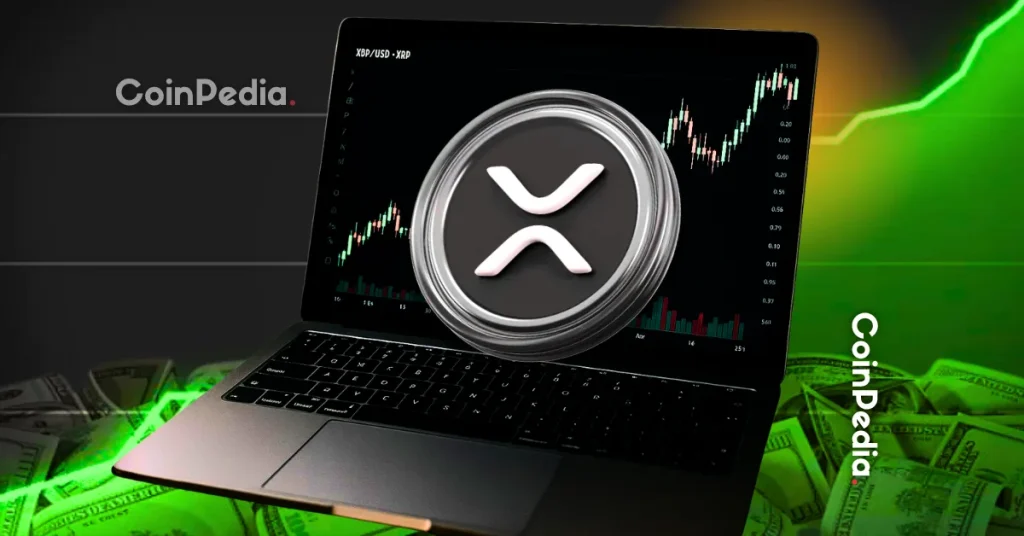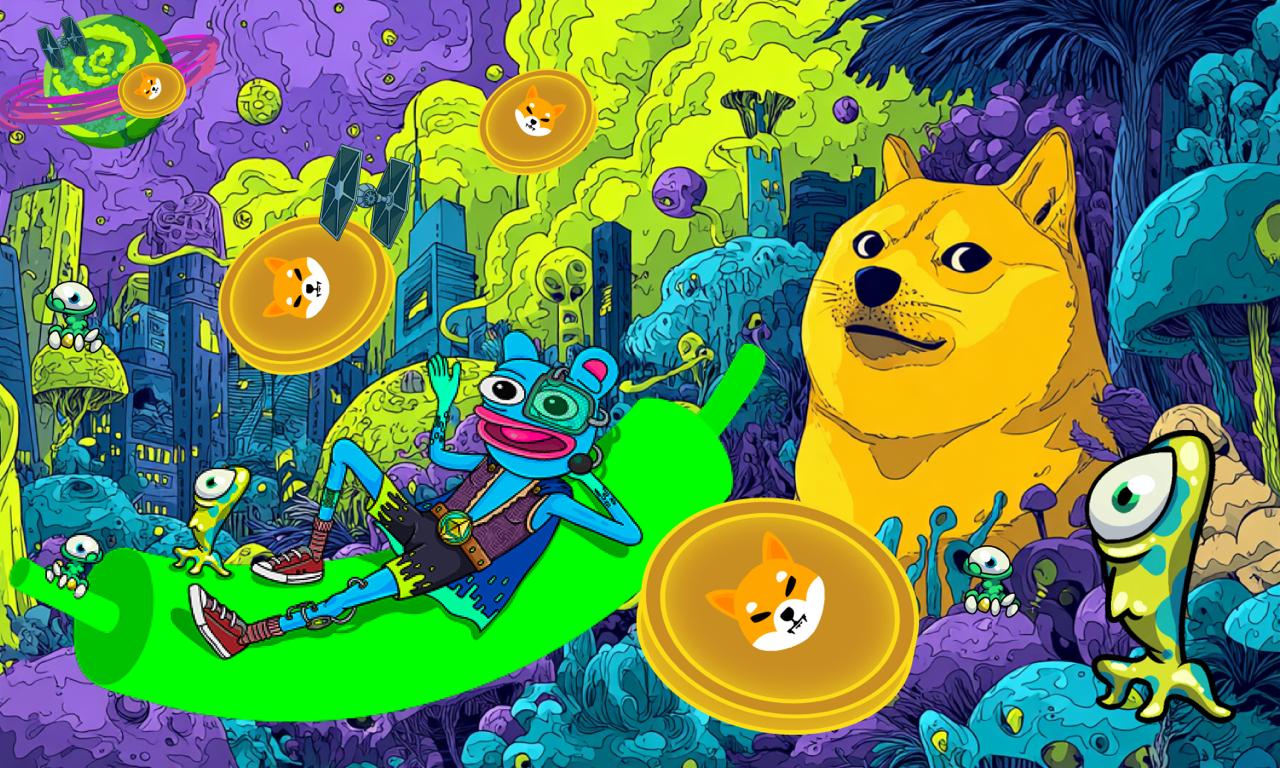Why Flare’s XRPfi Is the Key to Making XRP Fly

The post Why Flare’s XRPfi Is the Key to Making XRP Fly appeared first on Coinpedia Fintech News
What do you get when you combine XRP and DeFi? Why, XRPfi of course. Welcome to decentralized finance powered by XRP, the native asset of the Ripple ledger (also known as XRP Ledger) that’s since found a new lease on life with Flare’s blockchain for data. XRPfi has taken off in a big way this year, with Flare’s TVL growing by the tens-of-millions, weekly, since its launch in late-September 2025, as its XRP-focused DeFi ecosystem gathers momentum. The market has indicated that there is much positive sentiment surrounding XRPfi, and for good reason – it’s been a long time in the making.
From XRP to XRPfi
DeFi as we know it really got going in 2020 on Ethereum before expanding to other networks. Today, virtually all public blockchains have some kind of DeFi sector, enabling users to borrow and lend; stake and trade; and participate in other on-chain money markets without needing to custody the owner’s assets – thanks to the magic of smart contracts.
In parallel to DeFi taking Ethereum by storm, another leading OG chain – Ripple – was had no choice but to be limited to watching from the sidelines. Like Bitcoin, Ripple doesn’t natively support Turing-complete smart contracts, making it very difficult to build the sort of dapps that can be assembled with Solidity.
Also around the same time as DeFi Summer, a new blockchain ecosystem emerged, by the name of Flare Network, with an ambitious goal of expanding XRP’s native functionality. The asset was already one of the most liquid and valuable cryptocurrencies by market cap after ETH and BTC, and the upside to making XRP smart-contract compatible offered plenty of financial incentive to many stakeholders. The technical challenges were indeed challenging, however, Flare’s core team persisted and has successfully built out its ecosystem, with XRP at its core.
In 2025, efforts began paying off. TVL on Flare has grown by almost 40% since the launch of FXRP (Flare-issued XRP), and is up five-fold YTD. What started out as a bold idea has turned into a working reality. Not only has the growth of XRPfi transformed Flare into a major DeFi hub, but there are signs that it’s stimulating demand for XRP, with its price predicted to move higher as users put the crypto asset to work in order to earn yield. Here’s how it works.
The DeFi Framework That XRP Deserves
As Flare explains in its introduction to XRPfi, “XRP holders should have access to a wider selection of DeFi-enabled financial tools. For instance, there’s only one AMM live on XRPL [the XRP Ledger], when a holder of XRP – the [fifth] biggest market cap cryptocurrency – should have a suite of options to choose from.”
Flare achieves this by enabling non-smart contract assets such as XRP, BTC, and DOGE to be bridged to its network, where they can be used in DeFi. The benefits of this recently unlocked capability are manifold. For one thing, it means that users can hold XRP – and capitalize on the upside to further growth – while also borrowing against it and earning yield across numerous protocols.
For another thing, with the Tether-developed USD₮0 stablecoin now available on Flare, there’s access to a native stable that doesn’t have to be wrapped or bridged. This provides another important DeFi primitive and has helped to further deepen TVL on Flare. With both XRP and USD₮0 readily available on the network, there are ample opportunities for supplying liquidity and trading spot and perps markets. Once a simple payments token favored by various fintechs and money transmitters, XRP is now a multi-purpose DeFi asset.
The way in which Flare has achieved this without increasing security risk is through FAssets, its protocol that enables tokenized representations of assets such as XRP to be issued. This allows “plain” cryptocurrencies to be transformed into EVM-compatible tokens that can be used in an array of creative ways.
Making Staking an XRP Staple
One of the use cases that’s formed a cornerstone of Flare’s thriving DeFi ecosystem is XRP staking. Revealed in May 2025 with the support of Firelight, this allows users to stake their FXRP, into protocols such as Sceptre. In return, staker receive a staking token – stXRP – that can be used to earn additional yield, in the same manner as stETH on Ethereum.
But this is by no means the only way in which XRP has found a new lease of life on Flare: it’s also being used in native protocols where leveraged perpetual futures can be traded fully on-chain, and is deeply embedded into decentralized exchanges such as SparkDEX, which has created its own fully-fledged DeFi ecosystem that includes yield farming, staking, and a token launchpad. In short, if you’re an XRP holder and are still keeping your assets in cold storage, you’re likely leaving considerable yield on the table.
Where Next for XRPfi?
While September saw large quantities of the asset being bridged to the network, one of the reasons behind this surge has been improved onramps that make it easier for users to move XRP over to Flare’s network. This includes recent integrations such as the rising Xaman wallet which now enables FXRP to be directly minted. As a result, XRP holders can begin putting their assets to work on Flare in a matter of minutes.
Other catalysts include a 2.2 billion FLR incentive program that offers additional rewards for liquidity providers, juicing the total APY that is attainable. Flare is now busy onboarding more partners that are looking to enhance access to its DeFi services including MoreMarkets, which has just launched its XRP Flare Account, further simplifying access to yield.
XRP may have started out as a simple cryptocurrency designed for payments and speculative trading, but it’s since evolved into much more and it’s thanks in no small part to Flare. Its DeFi network marks the most successful example to date of a non-native asset being revitalized on a secondary chain. Whereas other attempts at recreating DeFi for non-smart contact assets, such as BTC with “BTCfi,” have struggled to gain traction, XRPfi has found product-market fit. If Flare’s TVL can keep on rising, there’s every prospect of XRP following suit as users flock to acquire DeFi’s unlikely utility token.
You May Also Like

The “100% Win Rate Whale” has completely closed its BTC long position, making a profit of $1.4 million

‘Code Is Law’ documentary nails the drama of DeFi hacks — despite what it leaves out
